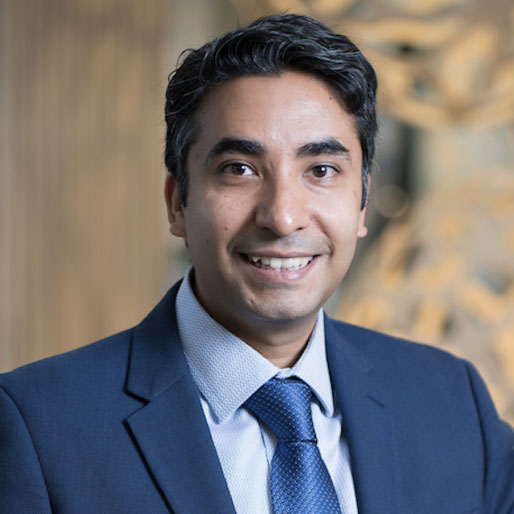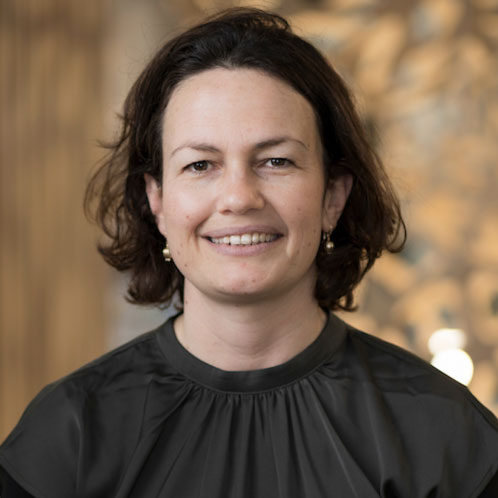The saying ‘good things come in small packages’ is a vast understatement. Made up of over 2 million working parts and 107 million light sensitive cells, it can register millions of colours and constantly send information to the brain that aids in our survival.
However, from this complexity stems the potential for problems to occur. To properly diagnose and treat patients with different needs our clinic provides a team of specialists.
Each ophthalmologist at Southern Eye Specialists has both a general wide-ranging base of medical skill along with the individual training and experience in their specific field of eye treatment. With this focused capability we can provide specialised expertise and the best possible care and attention no matter what the eye problem.
Our Specialties
Cataract
Patients with cloudy, blurred vision will often be experiencing cataracts, which are a natural part of the ageing process and quite common in those over 40. If you’ve ever worn glasses, you’ll know how frustrating it is to have smudges and marks on the lens which degrade your vision. This is similar to what vision is like with cataracts.
Cataracts can also be associated with trauma, certain medications, and may also be congenital. Fortunately, due to modern surgical techniques, cataracts can be removed with minimal disturbance to the eye and vision restored to normal. The surgeons at Southern Eye Specialists also utilise the most technologically advanced intra-ocular lenses, which can minimise the need to wear glasses after cataract surgery.
Cataracts form gradually over time and do not cause pain or discomfort. Mild cataracts often have little effect and can be left untreated, although they may cause glare. If a cataract becomes dense enough that it affects vision, surgery is used to remove the cataract to restore clarity.
Cataract surgery involves a keyhole incision made in the cornea. Through this cut, the cataract, or lens, is broken up, removed, and a replacement artificial lens is inserted.
All surgeons at Southern Eye Specialists are highly experienced in modern cataract surgery and can diagnose and advise on the best treatment, depending on the stage they are at and the problems you are experiencing.

Dr James Borthwick
MB ChB, FRANZCO
Disease and surgery of the retina and macula, cataract

Dr Sean Every
MB ChB, MMedSci (Distinction), FRANZCO
Disease and surgery of the retina and macula, cataract

Dr Jo-Anne Pon
MB ChB, FRANZCO
Oculoplastics, cataract, neuro-ophthalmology, strabismus, general ophthalmology

Dr John Rawstron
MB ChB, MPH, GDipM (Refract Surg), FRANZCO
Cataract, LASIK, corneal transplant

Dr Rebecca Stack
MB ChB (Distinction), MMedSci, FRANZCO
Cataract, oculoplastic and reconstructive surgeon

Dr Logan Robinson
MB Chb, PG Dip Ophth BS (Distinction), FRANZCO
Vitreoretinal surgery, diseases of the retina and macula, refractive cataract surgery

Dr Robert Weatherhead
MB ChB, FRCS, FRACS, FRANZCO
Oculoplastic and reconstructive surgeon

Dr Rahul Dwivedi
BSc (Hons), MB ChB, FRCOphth, FRANZCO
Consultant ophthalmologist – glaucoma & cataract specialist

Dr Genevieve Oliver
BHB, MB ChB, MOphth, PhD, FRANZCO
Specialist – diseases & surgery of the retina, vitreous & macula specialist cataract surgeon

Dr Elizabeth Conner
MBChB, BMedSci, FRANZCO
Paediatric ophthalmologist, anterior segment, cataract surgeon

Dr Dickson Wong
MBChB, FRANZCO
Glaucoma, oculoplastics, cataract surgeon
Glaucoma
Glaucoma is the most common disease that affects the optic nerve,which acts as the cable that transfersimages from the eye to the brain for processing. It is usually caused bypressure increases in the eye and initially causes loss of peripheral vision. Early on glaucoma doesn’t cause symptoms. That’s because high eye pressure usually isn’t painful, and loss of peripheral vision occurs slowly and silently. This means 50% of people with glaucoma don’t know they have disease.
Open-angle glaucoma is the most common type and is generally a symptom of ageing, with the pressure building slowly over time. Damage to the optic nerve and loss of peripheral vision occurs over many years but once the damage has occurred it is irreversible. The good news is that high pressure in the eye and damage to the optic nerve can be diagnosed by an eye examination. This means there is an opportunity for glaucoma to be diagnosed by regular eye examinations before serious damage has occurred. Treatment of glaucoma involves lowering eye pressure to prevent further damage to the nerve and peripheral vision. Although glaucoma can lead to blindness, if detected early and managed with the variety of modern treatment options available, very few people will develop vision loss.
Acute angle-closure is a rare type of glaucoma caused by a sudden blockage in the drainage canal, causing pressure to build rapidly, resulting in an emergency situation where the optic nerve can be damaged irreparably in a matter of hours. Sufferers report sudden blurred vision, light halos, headaches, and severe pain and need emergency treatment. A related condition, primary angle closure glaucoma, occurs when there is only partial blockage of the drainage canal. It shares many similarities to open-angle glaucoma, such as raised eye pressure and few symptoms, but damage to the optic nerve generally occurs more rapidly and there are some different treatment options.
Other less common forms of glaucoma include normal tension glaucoma, where eye pressure isn’t elevated but the optic nerve is still damaged; uveitic glaucoma, caused by complications from a form of eye inflammation called uveitis; and neovascular glaucoma which is caused by the formation of new blood vessels. Early detection is key to reducing the risk of optic nerve damage because once damage has occurred this cannot be reversed. The most common treatment to lower pressure is eye drops. Laser treatments, such as selective laser trabeculoplasty, can be used instead of, or in addition to, eye drops. Surgery to lower pressure within the eye can help immensely, usually in cases where laser and drops have not been sufficient, and include trabeculoplasty, trabeculectomy, and tube-shunt surgery.

Dr Rahul Dwivedi
BSc (Hons), MB ChB, FRCOphth, FRANZCO
Consultant ophthalmologist – glaucoma & cataract specialist

Dr Dickson Wong
MBChB, FRANZCO
Glaucoma, oculoplastics, cataract surgeon
Neuro-ophthalmology
This is a subspecialty of both neurology and ophthalmology, neuroophthalmology focusses on conditions that affect how the eye interacts with the brain. It can include nerve and muscle conditions and optic nerve problems, with symptoms spanning from vision loss, abnormal eye movements and double vision, to unequal pupil size and headaches.
Some diseases treated within this area of ophthalmology include stroke, multiple sclerosis, diabetes, and tumours. Depending on the underlying cause and your diagnosis, our specialists will work alongside any other medical professionals in your team to help treat the problem. This can range from surgical interventions to correct double vision, to the use of therapies to prevent muscle spasms around the eyes.
In this field we see patients with:
● Vision loss caused by stroke or brain tumour
● Ocular myasthenia gravis – an autoimmune disorder resulting in weakened eye muscles
● Optic neuritis caused by inflammation of the optic nerve
● Alzheimer’s disease with vision problems
● Blepharospasm or hemi-facial spasm – movement disorders with various causes that affect the eyes and face
● Optic atrophy – the loss of nerve fibres in the optic nerve
● Ischemic optic neuropathy – the obstruction of blood vessels to the optic nerve

Dr Jo-Anne Pon
MB ChB, FRANZCO
Oculoplastics, cataract, neuro-ophthalmology, strabismus, general ophthalmology
Cornea
This sub-speciality focuses on diseases affecting the cornea, the clear, dome-shaped covering at the front of the eye. The clear cornea captures light and helps focus it on the retina, so diseases that affect the clarity or shape of the cornea can affect vision. Such conditions include keratoconus, corneal dystrophy and corneal infections, and treatments include surgeries such as corneal graft.
Some corneal conditions requiring treatment include:
● Corneal dystrophies such as keratoconus, which is a thinning and bulging of the cornea, causing it to take on a cone shape. In mild cases, this is treated with glasses or contact lenses. Corneal cross linking is a clinic-based procedure to stop keratoconus progressing to more advanced stages – where surgery such as corneal graft is required.
● Corneal infections or keratitis. These are more common in contact lens users and, if caught early, can be treated with antibiotics or antifungal medicines. In severe cases or when left untreated, keratitis can cause scarring of the cornea and vision loss.

Dr John Rawstron
MB ChB, MPH, GDipM (Refract Surg), FRANZCO
Cataract, LASIK, corneal transplant

Dr Elizabeth Conner
MBChB, BMedSci, FRANZCO
Paediatric ophthalmologist, anterior segment, cataract surgeon
Retina
Made up of several layers, one of which contains photoreceptor cells (rods and cones), the retina is the light sensitive tissue that lines the inner surface of the rear of the eye. Retinal specialists have undertaken extra training to use medications, lasers and surgery to treat the wide variety of diseases which can affect the retina.
Other types of conditions treated by our retinal specialists:
● Diabetic eye disease
● Retinal vein occlusions
● Macula hole
● Epiretinal membrane
● Retinal tear
● Retinal detachment
● Flashes and floaters
● Retinal dystrophies

Dr James Borthwick
MB ChB, FRANZCO
Disease and surgery of the retina and macula, cataract

Dr Sean Every
MB ChB, MMedSci (Distinction), FRANZCO
Disease and surgery of the retina and macula, cataract

Dr Genevieve Oliver
BHB, MB ChB, MOphth, PhD, FRANZCO
Specialist – diseases & surgery of the retina, vitreous & macula specialist cataract surgeon

Dr Logan Robinson
MB Chb, PG Dip Ophth BS (Distinction), FRANZCO
Vitreoretinal surgery, diseases of the retina and macula, refractive cataract surgery
Oculoplastic
The structures and tissues surrounding the eye are vital to maintaining eye health and vision. This includes the eye lids, glands around the eyes, bones and muscles of the eye socket, and the tear drainage system. Some diseases and conditions can be corrected using surgical procedures on the eye and surrounding facial structure. Eye specialists who are experts in these surgeries are called oculoplastic surgeons. This specialist area encompasses a range of procedures around the eye, including the eye socket, eyelids, and tear ducts.
Oculoplastic surgeons can also operate on the bones around the eyeball and the tear drainage system, helping with such conditions as epiphora (watery eye) and nasolacrimal duct obstruction (blockage of tear duct). They also perform surgeries to remove skin cancers of the eyelid and tumours behind the eye or in the eye socket.

Dr Jo-Anne Pon
MB ChB, FRANZCO
Oculoplastics, cataract, neuro-ophthalmology, strabismus, general ophthalmology

Dr Rebecca Stack
MB ChB (Distinction), MMedSci, FRANZCO
Cataract, oculoplastic and reconstructive surgeon

Dr Dickson Wong
MBChB, FRANZCO
Glaucoma, oculoplastics, cataract surgeon
Paediatrics and strabismus
Eye conditions in children are common and can be corrected by specialised ophthalmologists. Many infants and children will grow out of their eye conditions, but it’s still important to seek professional help early. This will ensure any treatment occurs while the brain is still growing and before the child experiences any adversity due to the conditions.
Many childhood eye problems can cause amblyopia, or a ‘lazy eye’, where due to lack of clear vision in one eye, the part of the brain which processes the vision from that eye fails to develop properly. For some conditions, such as a squint, surgery can be required. Often, prescription glasses and patching of eyes is used to help correct misalignment of eyes and treat amblyopia.

Dr Jo-Anne Pon
MB ChB, FRANZCO
Oculoplastics, cataract, neuro-ophthalmology, strabismus, general ophthalmology

Dr Elizabeth Conner
MBChB, BMedSci, FRANZCO
Paediatric ophthalmologist, anterior segment, cataract surgeon
Our Services
Anterior segment
• Anterior segment photography
• Corneal topography
• Corneal graft (PK, DSAEK, DALK)
• Corneal collagen cross-linking
• Pterygium removal
• Pingueculum removal
• Chalazion surgery
• Intensed Pulsed Light (IPL) treatment for dry eye
Retina
• Spectralis OCT scanning
• OCT angiography
• Widefield retinal photography
• Fundus autofluorescence
• Fluorescein angiography
• Indocyanine green angiography
• YAG laser vitreolysis
• Argon retinal laser photocoagulation for
o diabetic eye disease
o retinal tears
o retinal vein occlusions
• Intravitreal injections
o Avastin
o Eylea
o Lucentis
o Triamcinolone
o Zaltrap
o Ozurdex
• Photodynamic therapy
• Subthreshold nanosecond laser for AMD
• Vitrectomy surgery for:
o Epiretinal membrane
o macula hole
o diabetic eye disease
o vitreous haemorrhage
o floaters
o retinal detachment
Cataract
• Biometry
• Monofocal IOL
• Toric IOL
• Refractive lens exchange with multifocal / extended depth of field IOL
• YAG laser capsulotomy
Neuro-ophthalmology
• Orthoptic assessment & management
• Computerised visual field testing
Oculoplastics
• Removal of skin cancers / benign lesions
• Repair of ptosis
• Repair of ectropion & entropion
• External & endonasal DCR
• Botox injections
• Blepharoplasty
• Management of Thyroid Eye Disease
Laser Eye Surgery
• LASIK
• SMILE Pro®
• PRK
Glaucoma
• Computerised visual field testing
• Spectralis OCT scanning
• YAG laser peripheral iridotomy
• Selective Laser Trabeculoplasty
• iStent
• Trabeculectomy
• Tube-shunt surgery
Paediatrics
• Comprehensive children’s eye examinations
• Assessment and non-surgical management of squint
• Squint surgery
Low vision clinic
• Consultation and examination
• Low vision aids
Clinical research
• Internationally recognised expertise in clinical research
• Regular participation in Phase 1, 2 and 3 clinical trials
• Partnerships with both NZ & international research institutions